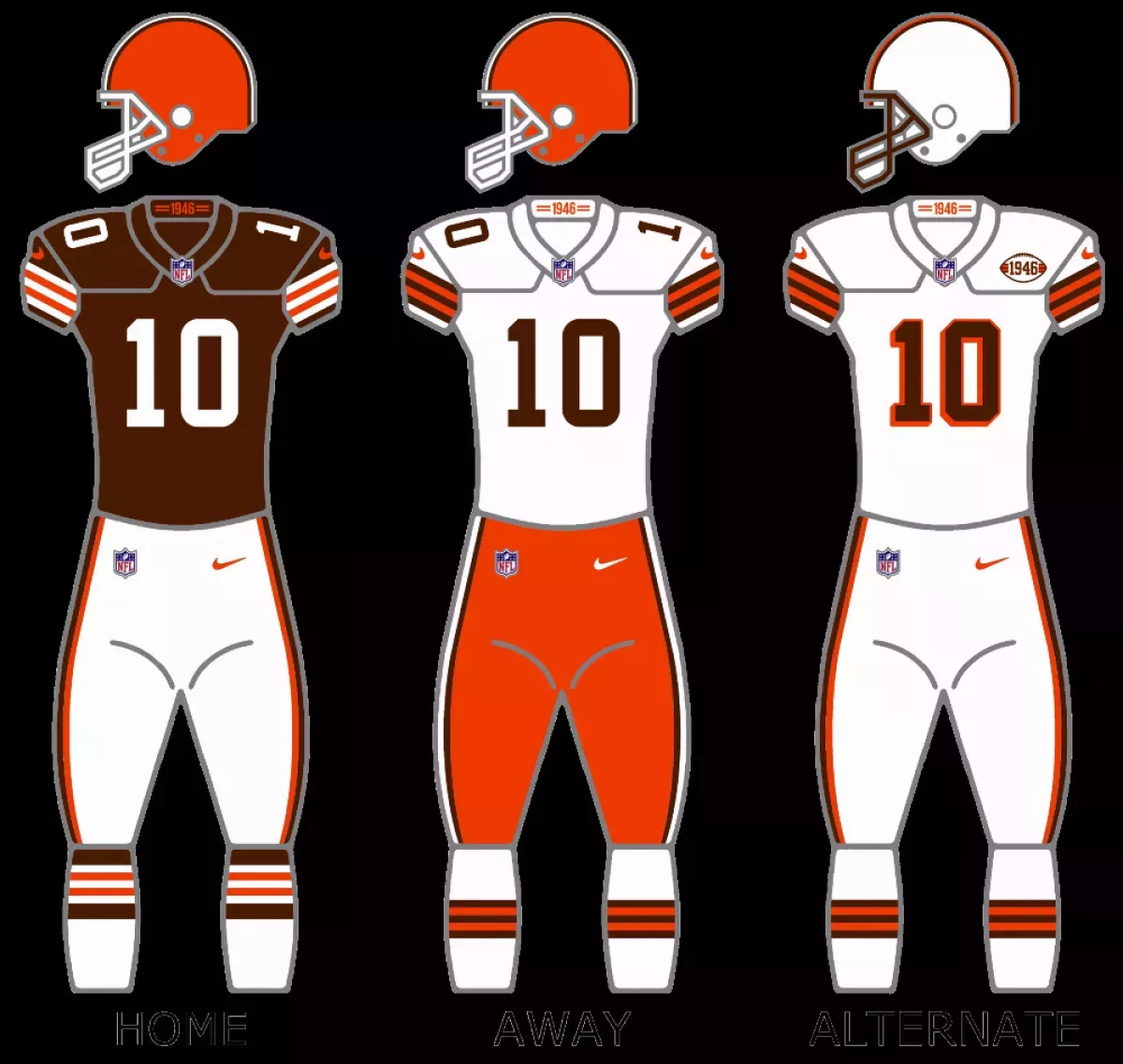The Cleveland Browns are a professional American football team based in Cleveland, competing in the NFL's AFC North division. Named after their original coach and co-founder Paul Brown, they play home games at Huntington Bank Field and are headquartered in Berea, Ohio. The team's colors are brown, orange, and white. Unusually, the Browns' helmets do not feature a logo.
1946: Throwback to the 1946 season
In 2023, the Cleveland Browns introduced new "White Out" uniforms which were a throwback to the 1946 season.
1950: Teams Played Twice Annually
In 1950, the Cleveland Browns and Pittsburgh Steelers began playing each other twice annually, making it the oldest rivalry in the AFC and the fifth-oldest rivalry in the NFL.
1950: Helmets other than orange
In 2023, the Browns introduced new "White Out" uniforms, marking the first time since 1950 the Browns will have non-orange helmets.
1961: Introduction of TV Numbers
In 1961, secondary numerals, referred to as "TV numbers," were introduced on the jersey sleeves of the Cleveland Browns' uniforms.
1964: Scheduling Steelers Games on Saturday Nights
From 1964 to 1970, former Cleveland Browns owner Art Modell scheduled home games against the Pittsburgh Steelers on Saturday nights to help fuel the "Turnpike Rivalry".
1964: Browns Honored for Championship Season
In 2005, the Browns production team was awarded an Emmy for a primetime special honoring the 1964 NFL Championship team, 'The 1964 Championship Show'.
1968: First Revisions to Sleeve Stripes
In 1968, the Cleveland Browns made the first minor revisions to the sleeve stripes on their uniforms. The brown jerseys worn in the early season featured these changes.
1969: Stripes Silkscreened
In 1969, the Cleveland Browns' white and brown jerseys underwent changes as stripes began to be silkscreened onto the sleeves and separated from each other to prevent color bleeding.
1970: Scheduling Steelers Games on Saturday Nights
From 1964 to 1970, former Cleveland Browns owner Art Modell scheduled home games against the Pittsburgh Steelers on Saturday nights to help fuel the "Turnpike Rivalry".
1970: Teams placed in opposite conferences
In 1970, the Browns and 49ers were placed in opposite conferences in the NFL, which diminished their rivalry.
1970: Browns and Oilers placed in AFC Central
In 1970, the Browns and Houston Oilers were placed in the AFC Central after the AFL-NFL merger, leading to frequent games.
1970: Teams Met Less Frequently
Since the NFL-AFL merger of 1970, the Cleveland Browns and Detroit Lions have met much less frequently due to the Browns' move to the AFC.
1975: Introduction of Orange Pants
In 1975, the Cleveland Browns introduced orange pants with a brown-white-brown stripe sequence as part of their uniform.
1981: Hanford Dixon begins career with the Browns
In 1981, Hanford Dixon began his career with the Cleveland Browns, playing cornerback for the team.
1983: End of Regular Orange Pants Use
In 1983, the Cleveland Browns stopped regularly wearing orange pants with a brown-white-brown stripe sequence, which had been symbolic of the "Kardiac Kids" era.
1984: Dawg Pound name adopted
In 1984, Browns fans in the bleacher section of Cleveland Municipal Stadium adopted the name "Dawg Pound" after the team's defense was referred to as 'The Dawgs'.
1984: Complete Uniform Redesign
In 1984, the Cleveland Browns' uniform was completely redesigned, featuring new striping patterns on the white jerseys, brown jerseys, and pants. Solid brown socks were worn with brown jerseys and solid orange socks with white jerseys. The brown numerals on the white jerseys were outlined in orange, and white numerals on the brown jerseys were double outlined in brown and orange.
1984: Solid Brown Socks
In 2002, The Cleveland Browns introduced solid brown socks for the first time since 1984 and were used with white, brown and orange jerseys.
1984: Exception to the Stripe Sequence
In the 1984 season, the Cleveland Browns made an exception to the basic five-stripe sequence on their uniform sleeves.
1985: Return to Original Uniform Design
In 1985, the Cleveland Browns' uniform was returned to a look similar to the original design, after the redesign in 1984 was not popular with fans.
1985: Sleeve Stripe Pattern
In 2006, the Cleveland Browns reverted to an older uniform style, featuring the original stripe pattern on the brown jersey sleeves. The white jersey has had that sleeve stripe pattern on a consistent basis since the 1985 season.
1986: 1986 AFC Championship
In the 1986 AFC Championship game, quarterback John Elway led "The Drive" to secure a tie in the waning moments at Cleveland Municipal Stadium; the Broncos went on to win 23–20 in overtime.
1987: 1987 AFC Championship Game
In 1987, the two teams met again in the AFC Championship game at Mile High Stadium. Denver took a 21-3 lead, but Browns' quarterback Bernie Kosar threw four touchdown passes to tie the game at 31-31. The Broncos won 38-33 after Browns' running back Earnest Byner fumbled at the 2-yard line.
1989: Hanford Dixon retires from the Browns
In 1989, cornerback Hanford Dixon retired from the Cleveland Browns, concluding his career with the team.
1989: Controversial Browns' Win
In the 1989 regular season, the Cleveland Browns had a controversial 16–13 win at Cleveland Municipal Stadium against the Denver Broncos. Referee Tom Dooley ordered the teams to switch ends of the field midway through the 4th quarter, giving the Browns a small, timely wind advantage to finish the game.
1989: 1989 AFC Championship
The Cleveland Browns met the Denver Broncos in the 1989 AFC Championship at Mile High Stadium, which the Broncos easily won by a score of 37–21.
1994: Playoff Matchup
The Cleveland Browns and Pittsburgh Steelers met in the playoffs in 1994, with the Steelers ultimately holding a 2-1 lead in the postseason series.
1995: Uniform Style Remained Until 1995
The Cleveland Browns' uniform design, which was similar to the original after being reverted in 1985, remained that way until 1995.
1995: Draft Picks
The rivalry between the Browns and Baltimore Ravens was due to the fact that the draft picks for 1995 to 1998 resulted in the rosters that won the Super Bowl for the Ravens in 2000.
1996: Browns Inactive
From 1996 to 1998, the Browns were inactive.
1998: Draft Picks
The rivalry between the Browns and Baltimore Ravens was due to the fact that the draft picks for 1995 to 1998 resulted in the rosters that won the Super Bowl for the Ravens in 2000.
1999: 49ers personnel help Browns relaunch
In 1999, several members of the 49ers organization, including Carmen Policy and Dwight Clark, aided the Browns' relaunch.
1999: Expansion Browns Adopt Traditional Design
In 1999, the expansion Cleveland Browns adopted the traditional uniform design with two exceptions: the TV numbers were moved to the shoulders, and the orange-brown-orange pants stripes were significantly widened.
1999: Steelers Dominance Since Browns Return
Since the Cleveland Browns returned to the league in 1999, the Pittsburgh Steelers have had a dominant record of 36-9-1 in their rivalry.
1999: Rivalry Cooled
Though the Cleveland Browns and Pittsburgh Steelers rivalry has cooled in Pittsburgh due to the Modell move as well as the Browns' poor play since 1999, the Steelers still remain the top rival for Cleveland.
1999: Bengals Edge Since Browns Return
While the Cincinnati Bengals have a 28–21 edge since the Cleveland Browns returned to the NFL in 1999, this series has been more competitive than the Browns' series with their other division rivals.
2000: Ravens Super Bowl Win
The rivalry between the Browns and Baltimore Ravens was due to the fact that the draft picks for 1995 to 1998 resulted in the rosters that won the Super Bowl for the Ravens in 2000.
2002: "Great Lakes Classic" Annual Preseason Game
From 2002 to 2014, the Cleveland Browns and Detroit Lions played an annual preseason game known as the "Great Lakes Classic".
2002: Divisional realignment
In 2002, divisional realignment placed the Browns in the AFC North and the Houston Oilers/Tennessee Titans in the AFC South, which resulted in them playing each other less frequently.
2002: Addition of "AL" Initials
In 2002, the Cleveland Browns added the initials "AL" to their jerseys to honor team owner Al Lerner who died in 2002.
2002: Experimentation with Uniform Design
In 2002, the Cleveland Browns began experimenting with the uniform design, introducing an alternate orange jersey and solid brown socks for the first time since 1984.
2002: Playoff Matchup
The Cleveland Browns and Pittsburgh Steelers met in the playoffs in 2002, with the Steelers ultimately holding a 2-1 lead in the postseason series.
2003: White Striped Socks Appeared Occasionally
In 2003, the Cleveland Browns occasionally wore the white striped socks with the white jerseys.
2003: Pants Stripe Variations
In 2003, the Cleveland Browns replaced the traditional orange-brown-orange stripes on the white pants with two variations of a brown-orange-brown sequence.
2003: Occasional Use of Orange Pants
In 2003, the Cleveland Browns wore the orange pants again occasionally, after having stopped regular use of them in 1983.
2004: Continued Pants Stripe Variations
In 2004, the Cleveland Browns continued experimenting with pants stripe variations, using two versions of a brown-orange-brown sequence.
2004: Occasional Use of Orange Pants
In 2004, the Cleveland Browns wore the orange pants again occasionally, continuing the practice from 2003.
2004: Steelers Winning Streak in Pittsburgh
The Pittsburgh Steelers started a 17-game winning streak in Pittsburgh against the Cleveland Browns in 2004. The streak lasted until 2020.
2005: Browns in-house production team wins Emmy Awards
In 2005, the Cleveland Browns in-house production team won two Lower Great Lakes Emmy Awards, one for "The 1964 Championship Show" and another for "The Paperboy" commercial spot.
2005: White Striped Socks Appeared Occasionally
In 2005, the Cleveland Browns occasionally wore the white striped socks with the white jerseys.
2005: Joined Stripe Sequence Used Exclusively
In 2005, the Cleveland Browns used the joined brown-orange-brown stripe sequence exclusively with both jerseys.
2006: Browns fans ranked most loyal in the NFL
In 2006, a Bizjournal study determined that Cleveland Browns fans are the most loyal in the NFL, based on attendance, loyalty during losing seasons, and enduring challenges.
2006: Brown Pants Created as an Option
In 2006, the Cleveland Browns had brown pants created as an option for their away uniform when they integrated the gray facemask.
2006: Return to Traditional Stripe Sequence
In 2006, the Cleveland Browns returned to the traditional orange-brown-orange stripe sequence on their pants.
2006: Reversion to Older Uniform Style
In 2006, the Cleveland Browns reverted to an older uniform style, featuring gray face masks; the original stripe pattern on the brown jersey sleeves; and the older, darker shade of brown.
2007: White Striped Socks Appeared Occasionally
In 2007, the Cleveland Browns occasionally wore the white striped socks with the white jerseys.
August 18, 2008: Brown Pants Debut
On August 18, 2008, the Cleveland Browns wore brown pants for the first time in team history during a preseason game against the New York Giants.
August 9, 2009: Brown Pants Worn in Scrimmage
On August 9, 2009, the Cleveland Browns wore the brown pants again during a "family" scrimmage, paired with white-striped socks.
September 19, 2010: Inaugural class of Browns Ring of Honor unveiled
On September 19, 2010, the Cleveland Browns unveiled the inaugural class of their Ring of Honor, which featured 16 Hall of Famers who entered the Hall of Fame as Browns players.
2010: Brown Pants Discontinued
In 2010, after being used for only one season, the Cleveland Browns discontinued the use of brown pants due to negative fan reception, returning to the white shirt-on-white pants combination.
2011: Browns Wear White for All Games
In the 2011 season, the Cleveland Browns chose to wear white at home and wound up wearing white for all 16 games, as home teams would wear their darker colored uniform when the Browns were on the road.
October 3, 2013: All-Brown Combination Debut
On October 3, 2013, the Cleveland Browns brought back the brown pants for a home game against the Buffalo Bills on Thursday Night Football, pairing them with the brown jerseys, marking the first time the team wore an all-brown combination in team history.
2013: Removal of "AL" Initials
In 2013, upon Jimmy Haslam assuming ownership of the team, the Cleveland Browns removed the "AL" initials from their jerseys, which had been added in 2002 to honor former owner Al Lerner.
2014: "Great Lakes Classic" Annual Preseason Game
From 2002 to 2014, the Cleveland Browns and Detroit Lions played an annual preseason game known as the "Great Lakes Classic".
2014: Phil Dawson and Colt McCoy signed with the 49ers
In 2014, Browns placekicker Phil Dawson and backup quarterback Colt McCoy both signed with the San Francisco 49ers.
2014: Browns erase 25-point deficit to defeat Titans
In 2014, the Cleveland Browns overcame a 28-3 deficit to defeat the Tennessee Titans by a score of 29-28.
April 14, 2015: New Uniform Combinations Unveiled
On April 14, 2015, the Cleveland Browns unveiled their new uniform combinations, featuring slight alterations to the orange color, a seal brown facemask, and the word "CLEVELAND" emblazoned above the jersey numerals.
2016: All-Brown Look for Color Rush
In 2016, the Cleveland Browns brought back the all-brown look for the NFL Color Rush program, minus the white elements.
2018: Nathan Zegura suspended for arguing with officials
In 2018, Browns commentator Nathan Zegura served an eight-game suspension for arguing with officials during a game while he was a sideline reporter.
2018: Browns break Broncos' winning streak
In 2018, Cleveland broke the Broncos' 11-game winning streak against them with a narrow 17–16 victory.
2018: Joe Thomas entered into Ring of Honor
In 2018, Joe Thomas was inducted into the Cleveland Browns Ring of Honor, recognized with the number 10,363 to commemorate his NFL record of consecutive snaps played on offense.
2018: Color Rush Uniform Worn Three Times
In 2018, despite the Color Rush program being discontinued, the Cleveland Browns wore the all-brown uniform at home three times.
2019: All-Brown Uniform Promoted
For the 2019 season, the Cleveland Browns promoted the all-brown uniform to their primary home uniform and donned it for six home games as well as any away game in which the home team wore white.
December 2020: Browns set franchise record for points in the first half
In December 2020, the Cleveland Browns set a franchise record for points in the first half during a game against the Tennessee Titans, leading 38-7 at halftime and ultimately winning 41-35.
2020: New Uniform Design Unveiled
In 2020, the Cleveland Browns unveiled a new uniform design that pays homage to the team's classic uniform designs from years past.
2020: Playoff Matchup
The Cleveland Browns and Pittsburgh Steelers met in the playoffs in 2020, with the Steelers ultimately holding a 2-1 lead in the postseason series.
2021: White Uniforms Worn in Celebration
In 2023, the Browns introduced new "White Out" uniforms which were first worn in 2021 in celebration of the Browns' 75th anniversary season.
2022: All-Brown Color Rush Uniform
Prior to the 2025 season, the Cleveland Browns unveiled a second alternate helmet to be worn with the all-brown Color Rush uniform, which was last worn in 2022.
2023: Ravens Lead Overall Series
As of the 2023 season, the Baltimore Ravens lead the overall series with the Cleveland Browns 36-14.
2023: Browns lead all-time series against 49ers
As of the 2023 season, the Cleveland Browns lead the all-time series against the San Francisco 49ers with a 20-10 record.
2023: Introduction of "White Out" Uniforms
In 2023, the Cleveland Browns introduced new "White Out" uniforms, an all-white uniform, featuring a white helmet, that will be worn during select home games.
2025: Unveiling of Second Alternate Helmet
Prior to the 2025 season, the Cleveland Browns unveiled a second alternate helmet, featuring a matte brown finish with a brown stripe flanked by two orange stripes.
Mentioned in this timeline
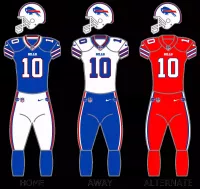
The Buffalo Bills are an NFL team representing the Buffalo...

San Francisco is a major commercial financial and cultural hub...
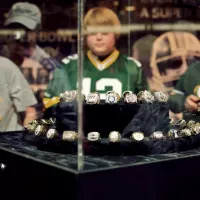
The Super Bowl is the annual championship game of the...

The Great Lakes are a chain of five large interconnected...
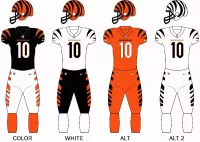
The Cincinnati Bengals are an NFL team based in Cincinnati...
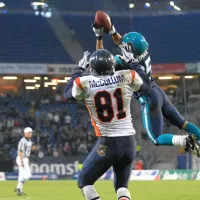
Football is a family of team sports primarily involving kicking...
Trending
10 days ago Israeli Attacks in Gaza Kill Children, Violating Ceasefire Agreements: Escalating Tensions

6 days ago Cam Spencer Shines Off Bench for Grizzlies, Continuing Impressive Performance

6 months ago Julia Fox Ditches Beauty Trend, Net Worth Soars: An 'It Girl' in 2025
22 days ago DHS immigration crackdown hits Charlotte, sparking protests and local confusion.

2 months ago Tiwa Savage apologizes for Tyla's remarks, sparking online backlash and 'coloured' identity row.

Pepsi is a cola-flavored carbonated soft drink and the flagship product of PepsiCo As of it held the position of...
Popular
Matt and Ross Duffer known as the Duffer Brothers are...

Candace Owens is an American conservative political commentator and author...
Aftyn Alyssa Behn is an American politician currently serving as...

Ilhan Omar is an American politician currently serving as the...

XXXTentacion born Jahseh Dwayne Ricardo Onfroy was a controversial yet...
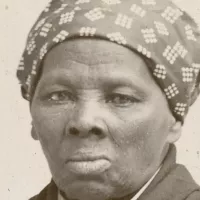
Harriet Tubman was a pivotal American abolitionist and social activist...
